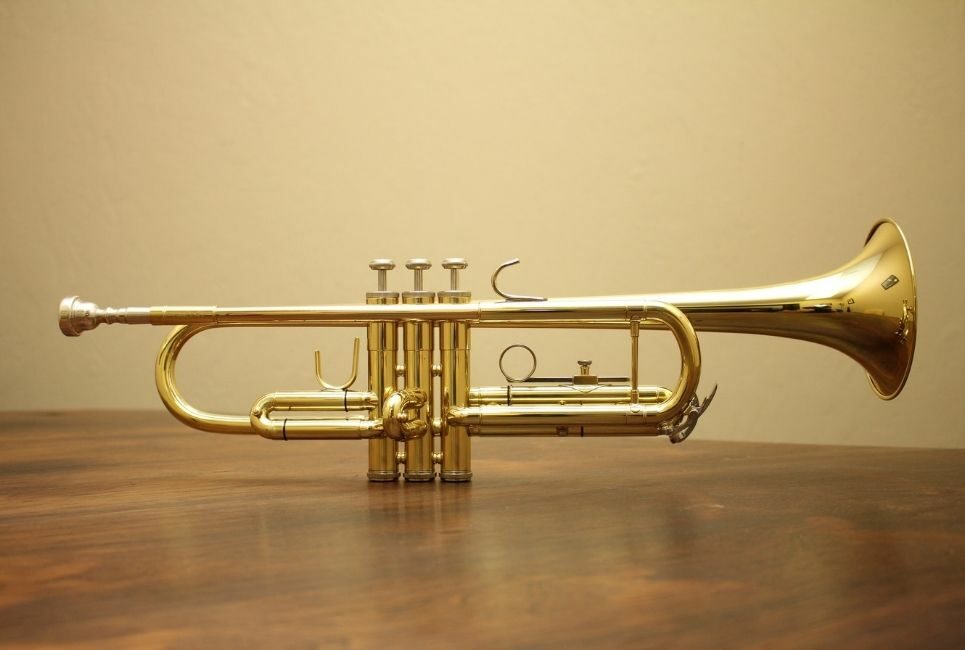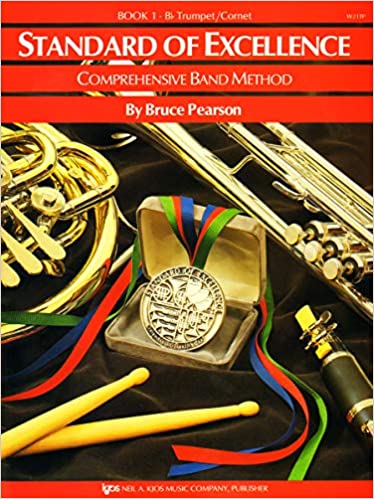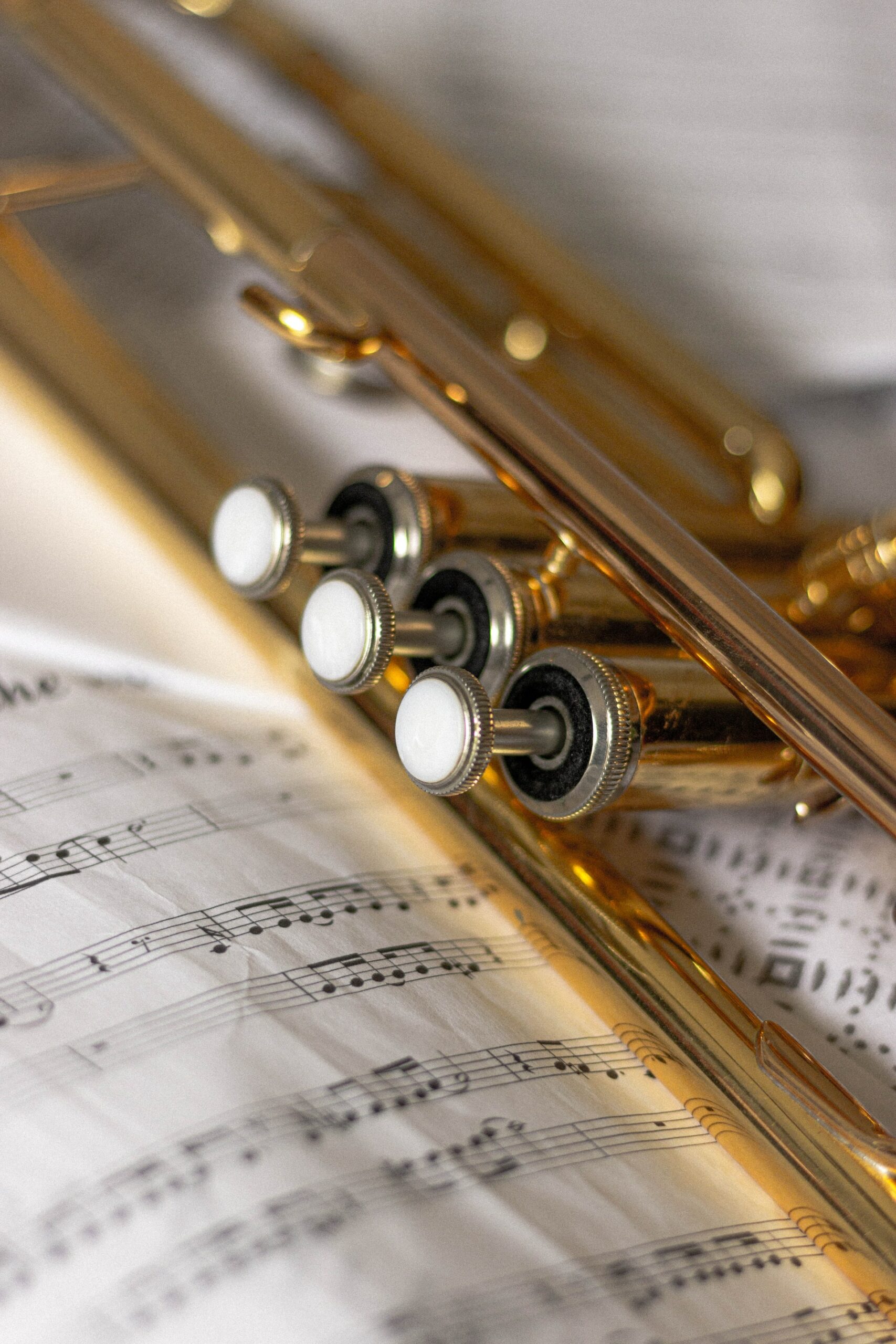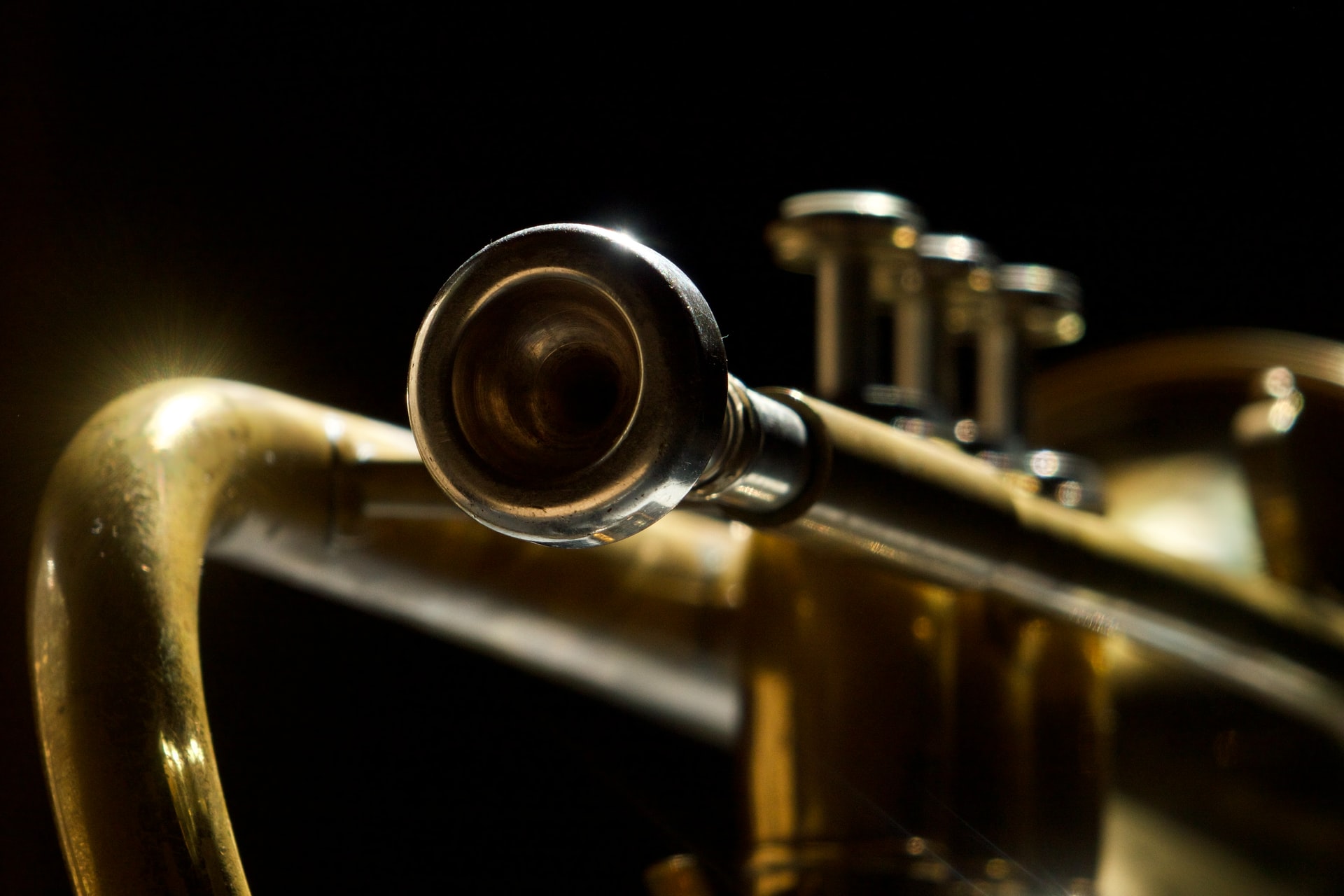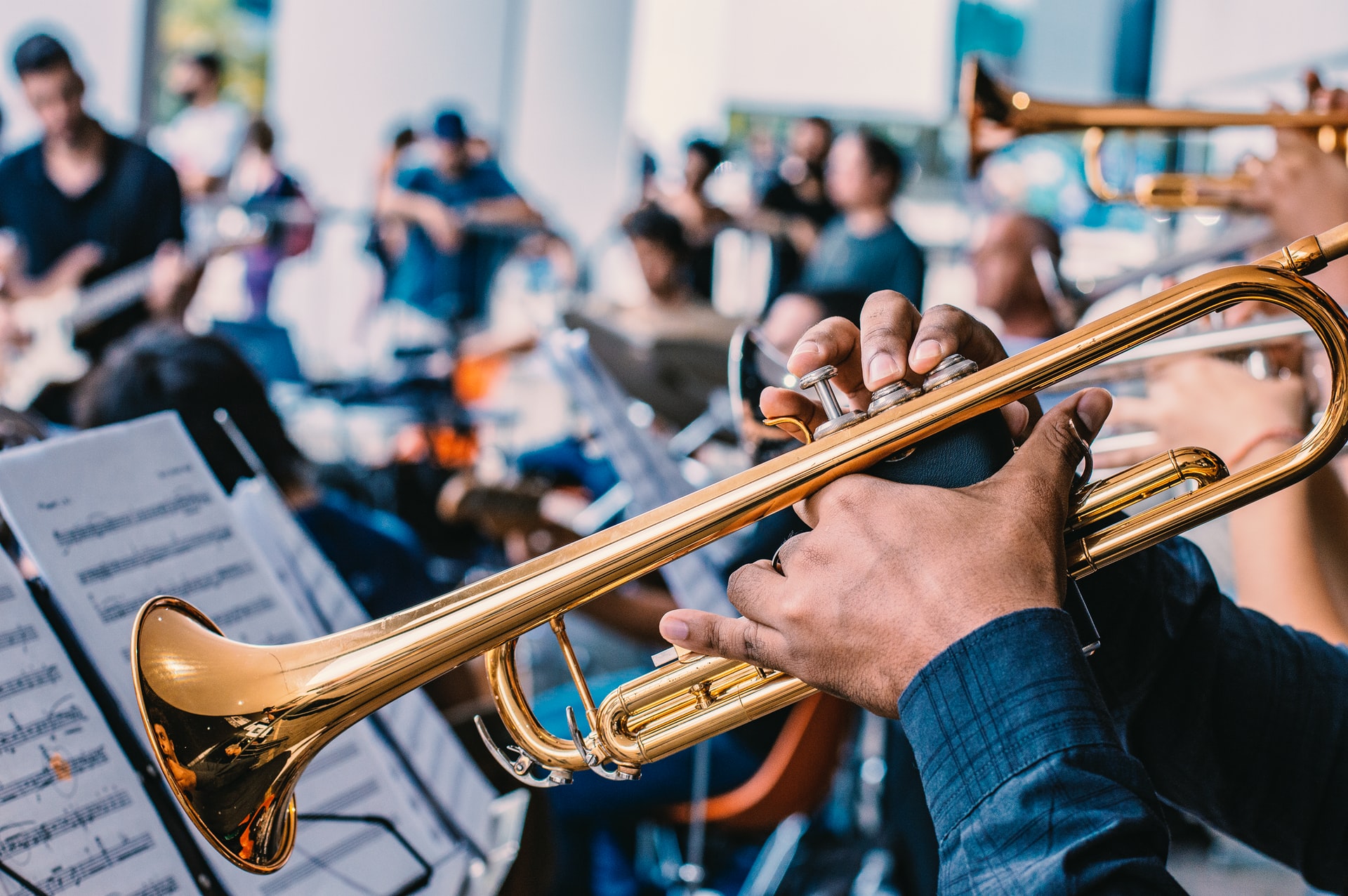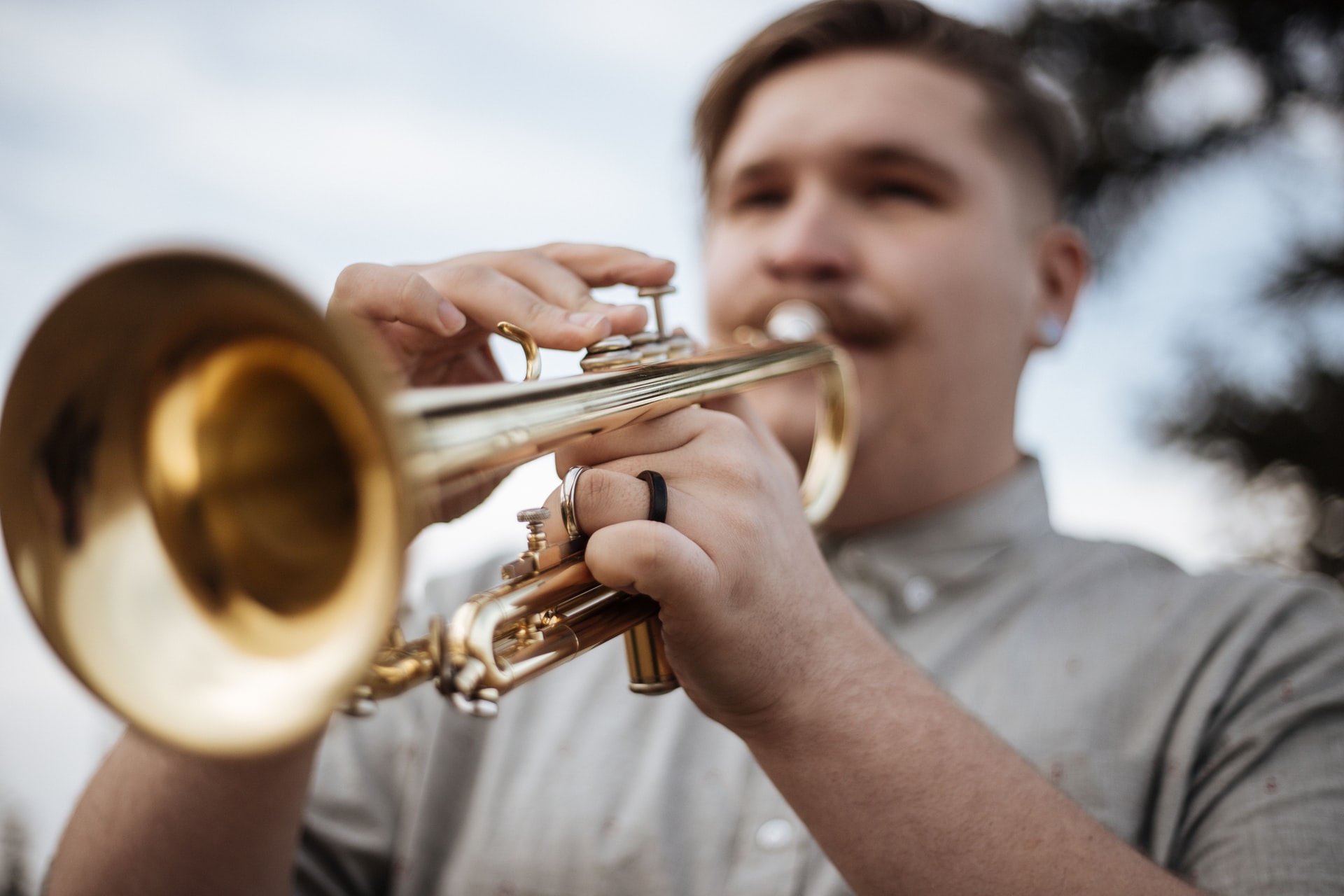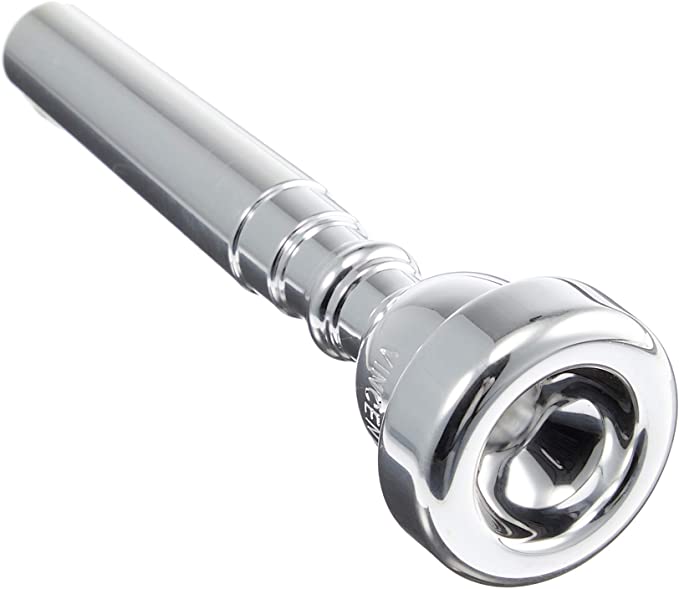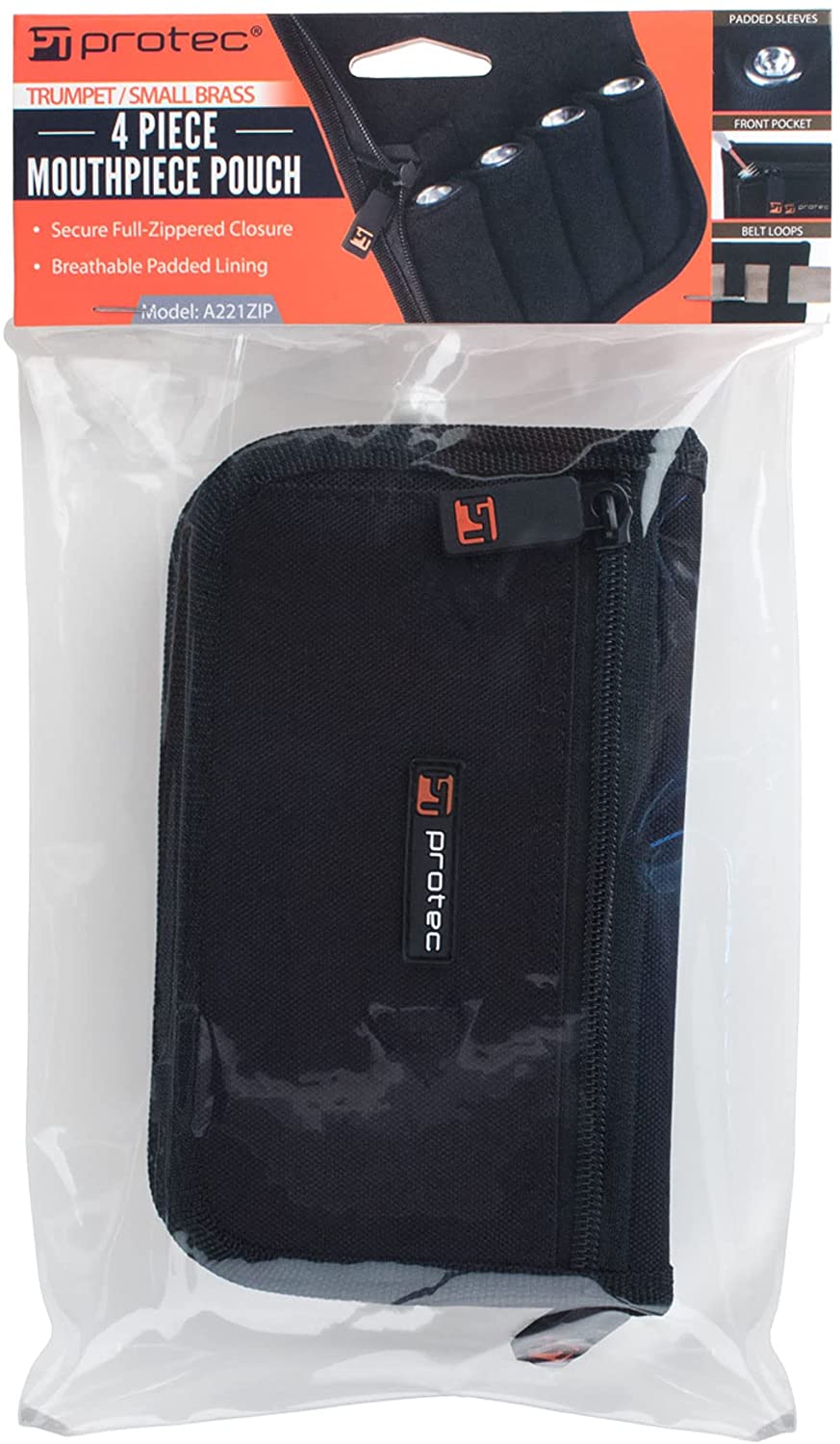- How to Find the Best Sopranino Saxophone - May 31, 2022
- How to Find the Best Contrabass Saxophone - May 30, 2022
- Trumpet Range Guide: Understanding The Entire Trumpet Range - May 19, 2022
If you want to get better at playing the trumpet, you should consult a trumpet range guide. Then, you can determine if you know all of the notes or which notes you should learn next.
Some trumpeters can play much higher or lower than the standard range. But you don’t have to go that far if you just want to enjoy playing music.
Bottom Line Up Front: Trumpets can play from a written F#3 to a D6, but some players can play much higher or lower. To learn new notes, take things slowly and practice each note well.
Written Trumpet Range
When learning about the range of a trumpet, you should consider the written range. This will be the same for all types of trumpets, regardless of their size or sounding pitch.
The lowest written note of the standard trumpet range is an F#3, which is the F# half an octave below middle C. On the other end, you can play up to a written D6.
That makes the range of most trumpets a little over two and a half octaves. However, some smaller trumpets, like the piccolo trumpet can only play up to a written G5, which is the space just above the top of the treble clef.
Sounding Trumpet Ranges
While most players start learning on a Bb trumpet, the instrument comes in multiple keys. Since all trumpets read the same notes on paper, that means they all sound a bit different.
A Bb trumpet sounds a major second lower than written, so its sounding range is E3 to C6. If you later add a C trumpet to your collection, it will sound as written (F#3 to D6).
Rarer trumpets include trumpets in D, Eb, E, F, and G. Those trumpets will all sound a major second, minor third, major second, perfect fourth, and perfect fifth higher than written, respectively.
Piccolo trumpets come in the key of Bb, so they’ll sound a minor seventh higher than written. If you play a piccolo trumpet in A, it will sound a major sixth higher.
Trumpet Range for Beginners
When you first start to learn the trumpet, you’ll most likely play a trumpet in Bb. However, you won’t learn all of the notes at once or even in your first few months of playing.
Most trumpet students learn written middle C as well as the notes D, E, F, and G above that. These notes fall in the middle of the trumpet range, so they’re easy for most beginners to produce.
After learning those notes, you may slowly expand up and down throughout the range. Be sure you’re comfortable playing the first notes before you try to learn new ones so that you don’t confuse yourself.
How to Expand Your Trumpet Range
Once you learn the first few notes, you might be itching to learn more notes. Of course, learning more notes is vital for being able to play difficult trumpet pieces.
Here are some tips you should consider when looking to expand your range. That way, you can improve your skills and keep from hurting your lips while playing.
Master the First Notes
I can’t emphasize enough how important it is to focus on a few notes at first. For one, you have a lot to think about when playing trumpet, from your air to your lips to your fingers.
If you try to learn a lot of notes at once, you might not remember any of them as well. So start with the notes C through G, and practice just those until you can comfortably hit them.
Use a trumpet method book to help learn the notes so that you have an auditory and visual reference. That will allow you to build some muscle memory during your practice.
Learn All Fingering Combinations
Most trumpets have three valves, which means there are eight possible fingering combinations as follows:
- 0
- 1
- 2
- 3
- 1 2
- 1 3
- 2 3
- 1 2 3
Now, the trumpet can play way more than eight notes. Just learning the fingerings won’t help you learn the entire range, but it can help you as you work to expand your range.
By learning the combinations, you can start to learn how those fingerings should feel. A lot of the fingerings will work for multiple notes, so you’ll only have to work on manipulating your airstream to learn higher or lower notes.
Some trumpets have a fourth valve, which means you could have up to 16 finger combinations. However, most beginner models only have three valves that you have to worry about.
Work on Your Embouchure
Since the trumpet doesn’t have a unique fingering for every possible note, you have to use your lips and air. That way, you can change the pitches without having to move your fingers.
A good way to work on this is to do lip slurs. In college, we’d do lip slurs as a good warmup exercise for marching band, and it helped the woodwind and brass players loosen up their lips.
While I played piccolo in that band, lip slurs helped me switch notes without changing fingerings (since that happens on woodwinds as well, though not to the same degree as on the trumpet). You can experiment to see what you need to do to produce lower and higher notes on your instrument.
Go Chromatically
It might be tempting to learn the lowest and highest notes on a trumpet right away. However, you should expand your range slowly by learning notes a half or whole step away from what you can already play.
For example, maybe you’ve learned how to play middle C through the G above that. You can work your way down by learning the B below middle C, then the A, and so on.
If you want to learn higher notes, learn the A in the staff, then the B and C. You’ll also need to learn how to play sharps and flats so that you can play in keys other than C major or A minor.
Learn One Note at a Time
As you learn new notes, choose one to focus on before you learn the next one. This will allow you to direct your attention to that particular pitch to help you get a clear tone.
Depending on how fast you learn, you may only need a day or two to learn each note. However, you might need closer to a week if you struggle to get the new pitch to come out.
Either speed is fine as long as you spend time learning the note so that you can play it well. If you speed through the notes, you might not be able to play the correct pitches when you have to perform.
Improve Your Breath Control
If you take shallow, fast breaths, you might do more harm than good to your trumpet studies. Playing a wind instrument requires you to have good control of your airstream.
Work on taking slow, deep breaths so that you can fill your lungs as full as possible. Then, you can learn how to blow the air into your trumpet to get the pitch you want.
For example, you tend to need to blow your air a bit higher to play higher notes. If you find that a note is giving you a lot of trouble, put your trumpet down and work on your breathing before you try the note again.
Take Private Lessons
One of the best and most efficient ways to get better at the trumpet is to take private lessons. A trumpet teacher can evaluate your current playing ability and help you work on your skills.
They’ll be able to show you what they do to produce certain notes. They might let you place your hand in front of their airstream to feel how much air they use, or they can show you how big their embouchure hole is.
If you take lessons in person, the teacher can also play your trumpet. Sometimes, the trumpet may be the problem, so upgrading could make it much easier to learn new notes.
Do Lip Exercises
If you play a lot, it can be easy to develop some tension in and around your lips. However, holding a lot of tension there can make it much more difficult to produce the notes you want.
Luckily, you can relieve some of the tension by doing some lip exercises or stretches. Make a neighing sound as if you’re a horse to help get your lips moving.
You can also move your back and forth or alternate between a smile and a frown. Some people say musicians are athletes of the smallest muscles, so you need to stretch like you would before a big sports match.
Don’t Forget Rhythms
As you learn new notes on the trumpet, don’t just focus on the pitches. You should also expand your range in terms of how fast or slow you can play and what note values you can read.
Trumpet music doesn’t just get harder by using more notes, so you should learn all of these concepts. That way, you can implement the notes you learn by playing new pieces of music.
Plus, you can use different rhythms to help practice your new notes. Instead of just playing a new note as a long tone, try playing it as repeated quarter notes to practice your articulations as well.
Avoid Comparison
Musicians can easily compare themselves to their colleagues, but this can be detrimental. If you play in a concert band or another ensemble, you may find other players progress faster than you.
We all learn at different speeds, so try not to pay too much attention to others. Focus on yourself and how well you’re progressing.
And keep in mind that just because someone can play a note once, that doesn’t mean they can play it consistently. It’s better to take things slowly so that you can maintain what you’ve learned.
Practice Consistently
One of the best things you can do for yourself is to set and follow a consistent practice schedule. In most cases, you don’t need to practice the trumpet for hours a day.
Twenty minutes may be more than enough for you to learn a new note and maintain what you know already. So think about your other obligations, such as school and work.
Consider how much time you can dedicate to playing your instrument. And try to play five or six times a week instead of one big practice session once a week so that you don’t lose what you learned by the time you practice next.
Upgrade Your Gear
Eventually, you may notice that your current trumpet setup is holding you back. This can happen if you find it hard to learn a new note, or you might realize you can’t play fast passages smoothly.
At that point, you’ll have to decide if you want to get a new mouthpiece or an entirely new trumpet. Sometimes, a new mouthpiece is all you need to play more notes and get a better tone.
However, if the issue also has to do with your fingerings, a new trumpet could be worth it. Of course, a new trumpet will cost a lot more than just a new mouthpiece, so consider your budget when upgrading.
How a Trumpet Mouthpiece Affects Your Range
Trumpet mouthpieces come in a variety of sizes, and the different parts of a mouthpiece may also be bigger or smaller. A mouthpiece contains the backbore, throat, cup, and rim.
In general, larger mouthpieces make playing lower notes more easy. The opposite is true of smaller mouthpieces, so they’re good to use when you want to play up high.
Some serious trumpet players carry a few mouthpieces with their trumpet so that they can swap out their gear. This is a great option if you tend to play high and low trumpet parts.
FAQs About a Trumpet Range Guide
Answer: The highest note most trumpets can play is a written D6, which is half an octave above the treble clef. However, experienced players can go much higher.
Some players can play as high as a written B7 (sounding C#8), which is around the same top note as a piccolo. Most players won’t need to play that high though.
Answer: The lowest standard note a trumpet can play is a written F#3. However, you can play pedal tones to expand the range downward.
Some of the easier pedal tones can go about an octave lower. If you practice them well, you may eventually be able to play as low as a Gb1 (which is lower than a cello).
Answer: You don’t have to play extremely low or high when playing the trumpet. However, it can be fun to do so when you’re looking to improve your skills.
Some jazz soloists like to play higher notes so that their sound can cut through a big band. Don’t feel like you have to learn notes outside of the standard range, though.
Answer: You don’t have to take trumpet lessons to expand your range, but I’d recommend it. Even just one or two lessons can be enough for you to learn the basics of good technique.
Then, you can use what you learn when you want to play a new note in the future. Just make sure you work with a trumpet specialist rather than a general music teacher so that they know the instrument well.
Final Note on the Trumpet Range Guide
Reviewing a trumpet range guide can help beginners and advancing students. The basic range is only about two and a half octaves, but pedal tones and the altissimo register can expand well over an octave in each direction.
As a beginner, start by learning a few notes in the middle of the trumpet’s range. Then, you can slowly expand your range to be able to play more music.
Looking for more interesting readings? Check out:

